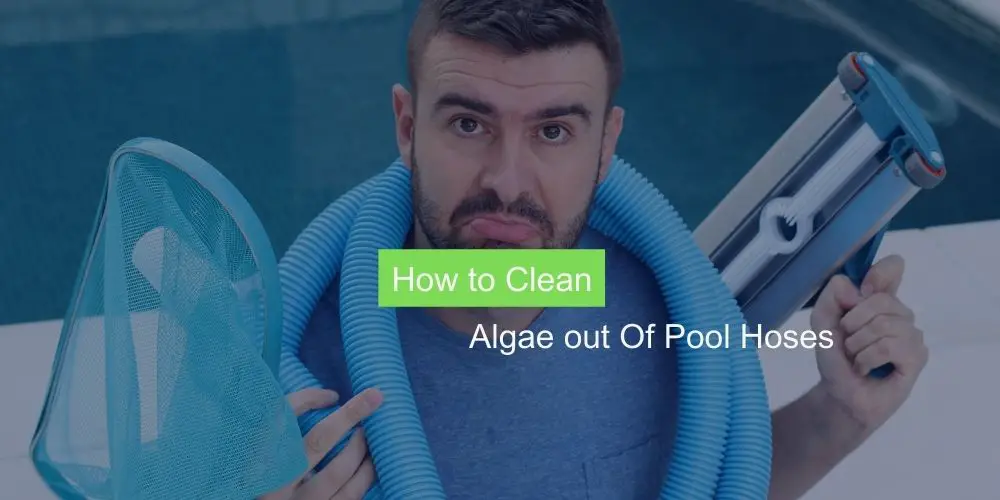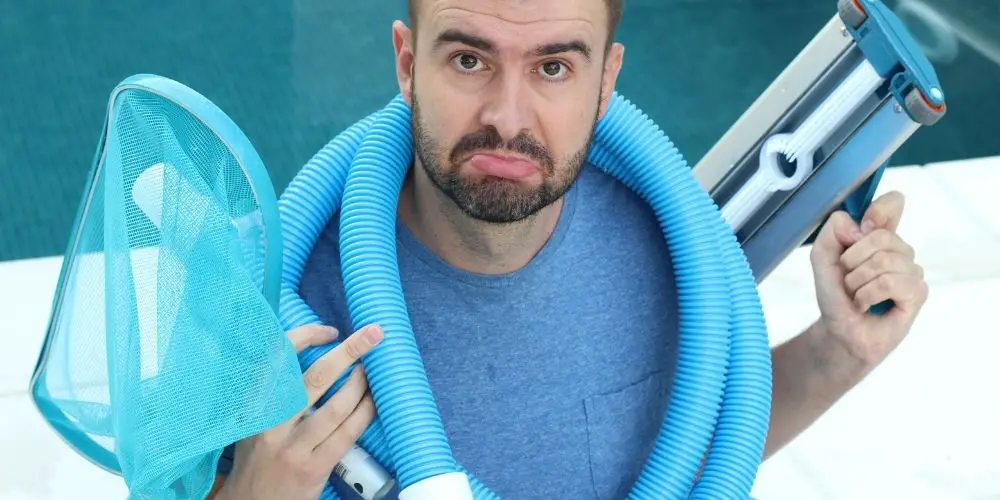
Maintaining a clean pool is crucial for an enjoyable and safe swimming experience. Unfortunately, algae growth in pool hoses is a common problem that can hinder the efficiency of the pool cleaning system. In this blog post, we will provide a step-by-step guide on cleaning algae out of pool hoses. Our goal is to equip you with the knowledge to keep your pool hoses clean and free from algae, ensuring optimal water circulation and filtration. Let’s explore the best methods to maintain a sparkling clean pool.
How to Clean Algae out Of Pool Hoses

Algae are microscopic organisms that can form in pool hoses, hindering the efficiency of the pool system. They enter through contaminated water or debris and thrive in the hoses, causing blockages. The risks associated with algae growth include reduced water flow, compromised filtration, and potential health hazards. Signs of algae presence include green or slimy residue, reduced water flow, and unpleasant odors. By recognizing these signs, you can take prompt action to clean the hoses and restore optimal functionality.
Quick Way to Clean Pump Intake Hoses for Your Easy Set Pool:
If you’ve fallen behind on pool maintenance and your pump intake hoses are now filled with green and nasty algae, don’t worry! I’ve found a quick and affordable solution to get them clean again. Here’s what you’ll need:
- Rotary dryer vent cleaning kit: Purchase one from Lowe’s or a similar store for around $17. Make sure it comes with two flexible rods that can be linked together or used individually with a drill.
- Drill: Use your drill to attach the brush from the kit to one of the rods.
- Algae cleaner: Grab some algae cleaner, which you can find for as little as $1 at Dollar Tree or a similar store.
Now, let’s get started:
- Attach the brush to one of the rods and secure it in your drill.
- Spray some algae cleaner into both ends of the hose. You may need to repeat this step if the algae is stubborn.
- Insert the brush into the hose and use the drill to scrub the interior. The brush may not reach all the way through, but you can rinse it off and repeat the process from the other end.
- Rinse the hose thoroughly, removing any remaining algae and cleaner.
- For thorough cleaning, consider spraying the hose again and repeating the scrubbing process.
Preventing Algae Growth in Pool Hoses
To ensure that your pool hoses remain free from algae and maintain optimal functionality, it’s crucial to implement preventive measures. By incorporating regular maintenance and cleaning, proper storage practices, and promoting effective pool water circulation and filtration, you can significantly reduce the risk of algae growth in your pool hoses.
Regular maintenance and cleaning schedule
Establishing a regular maintenance and cleaning schedule is essential for preventing algae growth in pool hoses. Here are some key steps to include in your routine:
- Inspect the hoses: Regularly check your pool hoses for any signs of algae growth or blockages. Look for green or slimy residue and reduced water flow, which may indicate the presence of algae.
- Clean the hoses: Follow the steps outlined earlier in this blog post to effectively clean your pool hoses. Regular cleaning will help remove any accumulated debris or algae and maintain optimal water flow.
- Monitor water chemistry: Properly balance your pool’s water chemistry by regularly testing and adjusting the pH, sanitizer levels, and alkalinity. Maintaining balanced water chemistry inhibits the growth of algae and promotes a clean swimming environment.
Proper storage of pool hoses
Proper storage of pool hoses when they are not in use is crucial for preventing algae growth. Consider the following practices:
- Thoroughly clean and dry the hoses: Before storing your pool hoses, ensure they are completely clean and dry. Any moisture left inside the hoses can create a favorable environment for algae growth.
- Coil and secure the hoses: Coil the hoses neatly and secure them using hose straps or hooks to prevent tangling. This will also help maintain the hoses’ shape and prevent kinks or bends that could obstruct water flow.
- Store in a dry and shaded area: Choose a storage location away from direct sunlight and moisture. Exposure to sunlight can degrade the hoses, while moisture can facilitate algae growth. Consider using a hose reel or storage bin to keep the hoses protected and organized.
Effective pool water circulation and filtration
Proper water circulation and filtration play a vital role in preventing algae growth in pool hoses. Here are some practices to enhance circulation and filtration:
- Run the pool pump regularly: Ensure that the pool pump is running for an adequate duration each day. Proper circulation helps prevent stagnant water and aids in distributing sanitizers effectively.
- Clean and maintain the pool filter: Regularly clean or backwash your pool filter according to the manufacturer’s instructions. A clean and well-maintained filter efficiently removes debris and particles from the water, reducing the risk of algae growth.
- Consider using a pool cover: When your pool is not in use, covering it with a pool cover can help prevent debris, sunlight, and organic matter from entering the water. This reduces the nutrients available for algae growth and minimizes the need for excessive chemical treatments.
By implementing these preventive measures, you can significantly reduce the likelihood of algae growth in your pool hoses. Consistent maintenance, proper storage practices, and effective water circulation and filtration will contribute to a clean and healthy pool environment for you and your family to enjoy.
Final Thoughts
All in all, keeping your pool hoses clean and free from algae is vital for maintaining a healthy and functional pool. Regular maintenance, proper storage, and effective water circulation and filtration are key preventive measures. By following the step-by-step cleaning process and implementing these preventive measures, you can ensure a clean and algae-free pool, providing a safe and enjoyable swimming experience for all. Take the necessary steps to maintain your pool hoses and enjoy a sparkling pool throughout the summer season.

Hi, This is Josh. I am a former competitive swimmer and current fitness enthusiast.
I created this site to share my love of swimming with the world!

